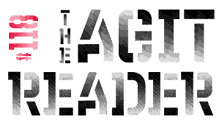
by Simon Goddard
Plume
Since the mid-80s, there has been few musical entities shown as much devotion as Morrissey. The one-time singer for the Smiths, whose songs have often celebrated the clumsy and shy, has amassed a number of followers too many to be called a cult, but no less obsessive. Every nuance of his lyrics and the many quirks he’s revealed over the years have been discected and celebrated by his fans, while similarly Morrissey has indulged his own avocations through veiled references, cover art and concert props.
But as much as Morrissey has revealed over the years, he has kept just as much a secret, with the devoted left to their own devices to catalog the many nuances of their hero. While it may not shed any new light on the ambiguity shrowding Morrissey’s sexual preference or the possibility of a Smith reunion, Mozipedia: The Encyclopedia of Morrissey and the Smiths attempts to provide a comprehensive source on everything concerning its subject.
The author, Simon Goddard, is perhaps the foremost Smiths authority, having already published Songs That Saved Your Life, a chronological analysis of the Smiths song-by-song, which included contributions from drummer Mike Joyce, bassist Andy Rourke, and in its second revised edition, guitarist Johnny Marr. At 532 pages and with more than 600 entries, the book is certainly encyclopedic in scope and not just in name. Goddard has exhaustively cataloged every influence and allusion of importance, as well as each and every song, album, and collaborator. The back cover’s cover statement of “everything and anything you ever wanted to know about Morrissey” is in no way hyperbole.
For example,The Barretts of Wimpole Street. A line in the original 1934 melodrama may have been the inspiration for Morrissey to write “Self! Self! Self!” on his tambourine for his 1995 solo tour, while the 1957 color remake featured John Gielgud, who is sampled on Smiths B-side “Rubber Ring” reading from The Importance of Being Ernest by Oscar Wilde (another Morrissey favorite). Other entries range from Nico (the VU singer) to sex (the act) to West Ham (the football club). Each point of reference reveals the interwoven common threads of Morrissey’s work, and Goddard is so completely thorough it is a marvel that there is actually so much to be written about one man and his musical contributions.
Of course, even cumulatively the many things cataloged here do not make the man, and even after reading through this entire volume, Morrissey still remains something of an enigma. It is no doubt this air of mystery, as well as his many influences dug from obscure singles and films of yesteryears, that contribute to his allure. That he can at once be seemingly so personal in his songs and yet so allusive when it comes to himself will always be compelling, and Goddard has convincingly captured this paradox and the resulting fascination.
Stephen Slaybaugh
Leonard Cohen, Bird on a Wire and Songs from the Road
I Think We're Alone Now
Shellac and Helen Money and Hallogallo 2010 Live Reviews
Keep on Running: The Story of Island Records
Rush Live Review
Neil Hamburger, Hot February Night
Clinic Live Review
Devo Live Review
Rush, Beyond the Lighted Stage
Pitchfork Music Fest '10 Wrap-Up
Here Comes Your Weekend Parking Lot Blowout Live Review
Tristan Perich, 1-Bit Symphony
Touch and Go: The Complete Hardcore Punk Zine '79-'83
A Live Evening with MGMT
